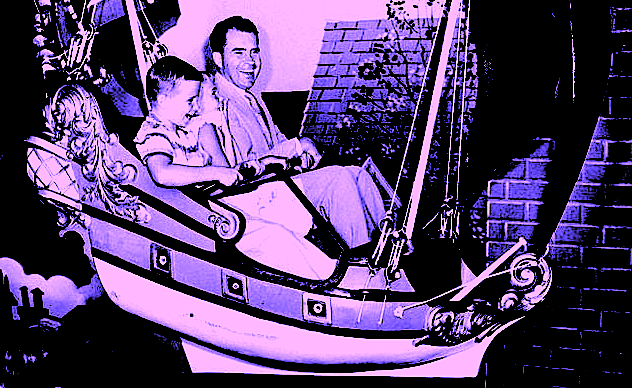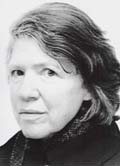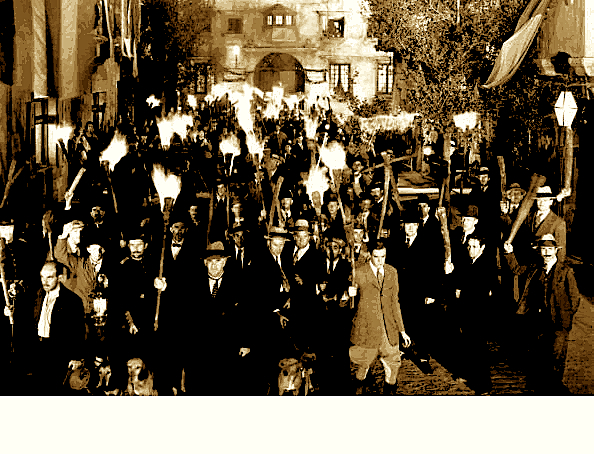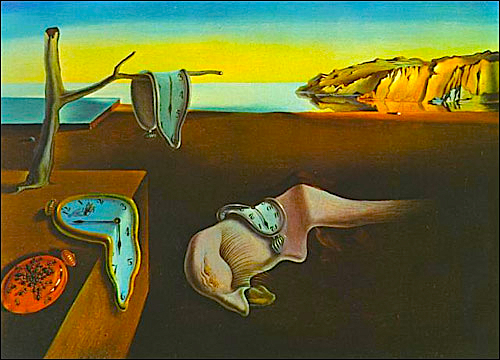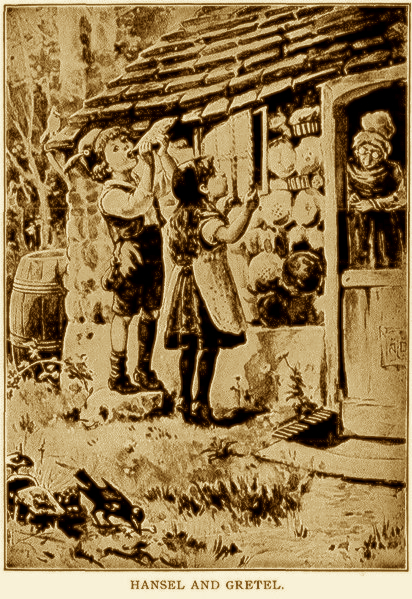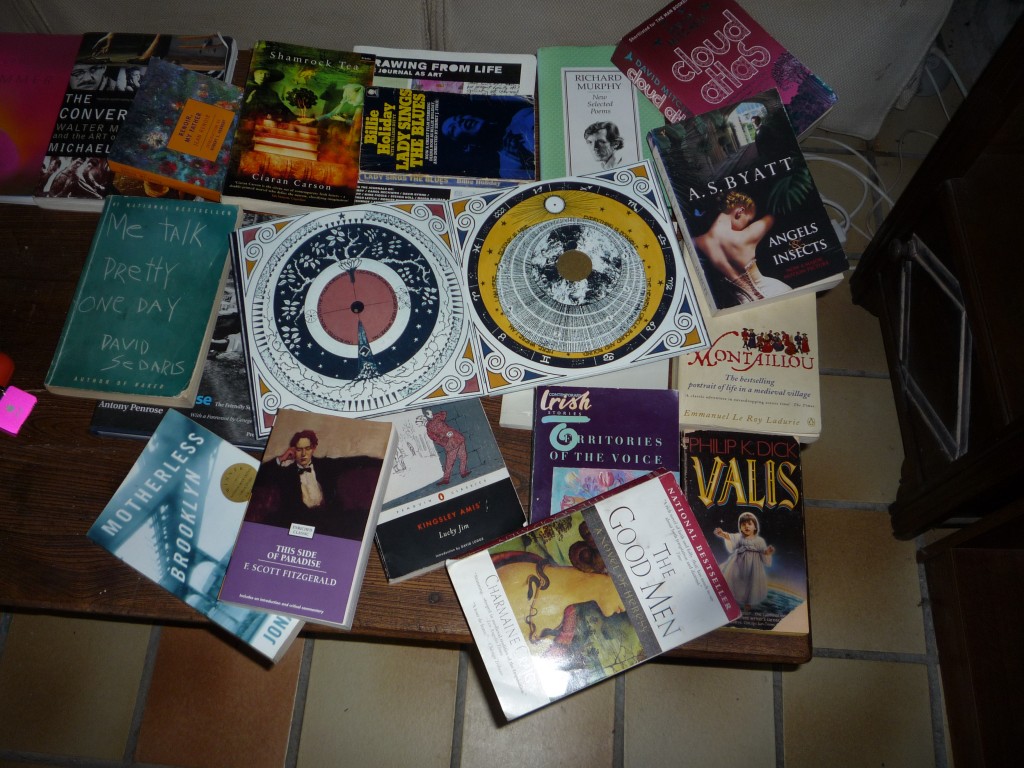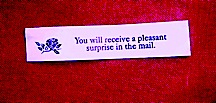

These, believe it or not, are the two sides of the single fortune I found tucked into my end-of-the-meal cookie last night: a tactfully-phrased prediction of my future happiness — by mail, no less! — accompanied by a terse statement about my general standing in the world. Had I been a less secure person, I might have taken umbrage at my dessert’s presuming to judge whether I counted or not, but since I had already sent back my census form, I found the symmetry very pleasing: clearly, Somebody Up There (or at any rate, Somebody Working in a Cookie Factory) was planning to reward the civic virtue of my outgoing mail with something fabulous in my incoming mail.
Imagine how dismayed I would have been, though, had I not yet popped my census form into the mail — or, even worse, if I had not yet received my census form. As I rearranged vegetables and yogurt containers in preparation for fitting my leftover asparagus in black bean sauce and Hunan pork into my overstuffed refrigerator, I would have kept wondering: is the census form the mail I’m supposed to find so darned pleasant? I mean, I understand the Constitutional obligation to be counted every ten years, but who is this fortune cookie to order me to enjoy filling it out?”
Admittedly, in a real-life fortune cookie-consumption situation, this might have been a bit of an overreaction. (Although what’s next, I wonder? Miranda warnings printed on Mars bars, for easy distribution at crime scenes? The First Amendment immortalized in marzipan, lest bakery patrons temporarily forget about their right to freedom of assembly whilst purchasing fresh macaroons?) Had the protagonist in a novel or memoir stumbled upon this chatty piece of paper, however — and let’s face it, less probable things turn up on the manuscript page all the time — it would have seemed pretty significant, wouldn’t it?
Any thoughts on why that might be the case? Could it be that this bizarre means of communication is one of those telling details I keep urging all of you to work into the opening pages of your manuscripts, as well as the descriptive paragraph in your queries, synopses, verbal pitches, and contest entries? Could the paragraphs above be crammed with the kind of fresh, unexpected little tidbits intended to make Millicent the agency screener or Mehitabel the contest judge suddenly sit bolt upright, exclaiming, “My word — I’ve never seen anything like that before.”
Hint: since I’m opening our foray into craft with it, chances are pretty good that I’m showing you some telling details. Or, to put it in terms the whole English class can understand, choosing to incorporate that wacky fortune cookie into the narrative shows, rather than tells, something about the situation and character.
How can a savvy self-editing writer tell whether a detail is, in fact, telling? Here’s a pretty reliable test: if the same anecdote were told without that particular detail, or with it described in (ugh) general terms, would the story would be inherently less interesting?
Don’t believe that so simple a change could have such a dramatic subjective effect? Okay, let me tell that story again with the telling details minimized. To make it a fair test, I’m going to keep the subject matter of the fortunes the same.
These, believe it or not, are the two sides of the single fortune I found inside a fortune cookie last night: a prediction of my happiness, accompanied by a statement about my standing in the world. Had I been a less secure person, I might have taken umbrage at my dessert’s presuming to judge whether I counted or not, but since I had already sent back my census form, I found the symmetry very pleasing: clearly, Somebody Up There was planning to reward the civic virtue of my outgoing mail with something fabulous in my incoming mail.
Imagine how dismayed I would have been, though, had I not yet popped my census form into the mail — or, even worse, if I had not yet received my census form. As I worked my Chinese food leftovers into my refrigerator, I would have kept wondering: is the census form the mail I’m supposed to find so darned pleasant? I mean, I understand the legal obligation to be counted every ten years, but who is this fortune cookie to order me to enjoy filling it out?”
Admittedly, this might have been a bit of an overreaction. (Although what’s next, I wonder? Police advising the arrested of their rights by given them candy? The First Amendment immortalized in baked goods, lest bakery patrons temporarily forget about their right to freedom of assembly?)
It’s not as funny, is it, or as interesting? I haven’t made very deep cuts here — mostly, I’ve trimmed the adjectives — and the voice is still essentially the same. But I ask you: is the story as memorable without those telling details? I think not.
Some of you are still not convinced, I can tell. Okay, let’s take a more radical approach to cutting text, something more like what most aspiring writers do to the descriptive paragraphs in their query letters, the story overviews in their verbal pitches, and/or the entirety of their synopses, to make them fit within the required quite short parameters. Take a gander at the same tale, told in the generic terms that writers adopt in the interests of brevity:
Last night, I cracked open a fortune cookie at the end of my meal and discovered something I had never encountered before: a two-sided fortune, one side predicting I’d receive something good in the mail, the other reminding me that it was important that everyone be counted for the census. Since I had already sent back my census form, I found the symmetry very pleasing: clearly, Somebody Up There (or at any rate, Somebody Working in a Cookie Factory) was happy that I’d already filled it out.
Imagine how dismayed I would have been, though, had I not yet done so — or, even worse, if I had not yet received my form. As I rearranged food containers in my refrigerator, so I could fit my leftovers inside, I would have kept wondering: is the census the mail I’m supposed to find so darned pleasant? I mean, I understand what the census is for, but who is this fortune cookie to order me to enjoy filling it out?” Admittedly, this might have been a bit of an overreaction. (Although what’s next, I wonder)
Not nearly as much of a grabber as the original version, is it? Or the second, for that matter. No one could dispute that it’s a shorter version of the same story, but notice how in this rendition, the narrator seems to assume that the reader will either picture the incident so clearly that no details are necessary — or, even more common in memoir manuscripts and comic scenes in novels, presume that it’s the reader’s job to fill in the details, not the writer’s.
If you ever plan to submit your writing to Millicent or Mehitabel, there’s something you need to know: as far as professional readers are concerned, it’s the writer’s responsibility to tell the story in a way that provokes the intended reaction in the reader, not the reader’s to guess what the writer meant.
In other words, a professional reading is seldom anywhere near as charitable as the average submitter or contest entrant hopes it will be. Blame it on the intensity of competition created by literally millions of aspiring writers seeking to get published: Millicent knows that if the well-written submission in front of her does not provide her with the reading experience her boss the agent believes will sell right now, chances are good that one of the next thousand submissions will.
According to her, then, it’s your job to draw her into your story so completely that she forgets about all of that. It’s your job to wow her with your storytelling, regardless of the category of your book.
As some of you may already have suspected, I am not bringing this up at the beginning of our discussion of craft by accident: being aware of the imperative to tell the story well, rather than merely present it in a series of well-written sentences, gives an aspiring writer a significant advantage in preparing a submission or a contest entry. Heck, I’ll go even further: one of the best rules of thumb an aspiring writer can adopt is construct and revise your manuscript assuming a critical reader who wishes to be entertained, rather than an indulgent reader who is looking for writing potential.
This is particularly good advice — and I suspect that this will come as a surprise to some of you — if you happen either to be writing memoir or a novel with scenes based upon your personal experience. All too often, reality-based narrators rely upon the fact that something really happened to render it interesting to a reader, regardless of how skillfully that story may be told. All that’s really necessary is a clear telling, right? Or that the kind of terse narrative that works so well in a verbal anecdote will inspire the same reaction if reproduced verbatim on the page.
How well do either of these extremely common theories work out in practice? Well, let me ask you: did you prefer the first version of the fortune cookie story, the second, or the third?
More importantly for submission purposes, which do you think would grab Millicent the most as the opening of a manuscript? Or Mehitabel as the first few paragraphs of a contest entry?
Uh-huh. As we’ve seen, the difference between those three renditions was not the voice (although a case could be made that part of the voice of the first was created through the selection of the details) or even the writing quality (although the last version did get a mite word-repetitive), but the narrative’s willingness to include telling details — and unusual ones at that.
Allow me to suggest a radical interpretation of these facts: what if the entertainment differential between the three lay not in an authorial failure of imagination in composing the last version, but in a failure to recognize that the point of including this anecdote is presumably to entertain and inform the reader? In telling the story as quickly as possible, can a writer sometimes defeat the purpose of including it at all?
Ponder those questions for a moment, novelists who make things up from whole cloth. I’m going to take a moment to address the billows of anxiety wafting from those who write the real.
“But Anne!” memoirists and reality-based novelists protest nervously. “The things I write about actually happened — I can’t just make up pithy little details, can I? I have to stick to what happened!”
True enough, anxious truth-tellers: if you are writing the real, you cannot control the facts. What you can control, what any writer must control, is how you present them to the reader. No matter what you write, the success of your narrative is going to depend largely upon your storytelling skills — they’re what separates your account of a particular incident from anybody else’s, right?
Frankly, this isn’t an easy task, even if dear self doesn’t happen to be the protagonist; it’s hard to represent the real world well on the page. And let’s face it, reality is sometimes a lousy storyteller.
Oh, your life has never been trite or obvious or just plain perplexing, even for a minute? Okay, all of you English and Literature majors, tell me, please, how the following 100% true anecdote rates on the symbolism front.
A couple of years ago, I was scheduled to give a eulogy for a dead friend of mine — a writer of great promise, as the pros used to say — at our college reunion. Because several of my classmates had, unfortunately, passed away since our last get-together, eight of us were to give our eulogies at the same event. Because I am, for better of worse, known to my long-time acquaintances as a teller of jokes, I was under substantial pressure to…how shall I put this?…clean up the narrative of my late friend’s life a little. Or at least tell a version that might not offend the folks who didn’t happen to know him.
No, that’s not the symbolic part; that’s all backstory. Here’s the symbolism: my throat was annoyingly, scratchily sore for the entire week that I was editing the eulogy.
Now, if I saw a parallel that obvious in a novel I was editing, I would probably advise cutting it. “No need to hit the reader over the head with it,” I’d scrawl in the margins. “Yes, it’s showing, not telling, but please. Couldn’t you come up with something a bit more original?”
(And yes, now that you mention it, I am known for the length of my marginalia. Brevity may be the soul of wit, but explanation is often the soul of clarity.)
Now, if my life were a short story written for a high school English class, the voice loss in that anecdote might pass for legitimate symbolism — or even irony, in a pinch. A bit heavy-handed, true, but certainly situationally appropriate: outsiders move to silence protagonist’s voice through censorship = protagonist’s sore throat. Both New Age the-body-is-telling-you-something types and postmodern the-body-is-a-text theorists would undoubtedly be pleased.
But the fact is, in a novel or memoir, this cause-and-effect dynamic would seem forced, or even trite. Certainly, it’s unlikely to make Millicent drop her latte and scream, “Wow, I never saw that coming!”
As I believe I may have mentioned, oh, four or five hundred times before in this very forum, just because something happens in real life doesn’t necessarily mean that it will make convincing fiction. My sore throat is precisely the type of symbolism that comes across as ham-handed in a novel. It’s too immediate, for one thing, too quid pro quo.
Dramatically, the situation should have taken time to build — over the years since my friend’s death, perhaps — so the reader could have felt clever for figuring out why the throat problem happened. Maybe even anticipated it.
How much better would it have been, in storytelling terms, if our protagonist had dealt with all the different input with aplomb, not coming down with strep throat until scant minutes before she was to speak? That way, in fine melodramatic style, she would have to croak her way through her speech, while her doctor stood by anxiously with antibiotics.
The possibilities make the writerly heart swoon, don’t they?
Just think how long it would extend a funeral scene if a eulogizer were unable to speak more than a few emotion-charged words before her voice disappeared with a mouse-like squeak. Imagine the deceased’s secret admirer creeping closer and closer, to catch the muttered words.
Heck, just think of the dramatic impact of any high-stakes interpersonal battle where one of the arguers cannot speak above a whisper. Or the comic value of the persecuted protagonist’s being able to infect her tormenters with strep, so they, too, are speechless by the end of the story.
Great stuff, eh? Much, much better than protagonist feels silenced, protagonist IS silenced. That’s just so…literal.
Besides, readers like to see a complex array of factors as causes for an event, and an equally complex array of effects. Perhaps if our protagonist had been not spoken about her friend since he passed away (which, in a sense, is quite true: I was unable to make it across the country for his memorial service — that could be transformed into an interesting flashback), then she would be fictionally justified in developing speech-inhibiting throat problems now. Or if he and she had shared deep, dark secrets she had sworn never to reveal (no comment), how telling a slight sore throat might be on the eve of spilling the proverbial beans, eh?
But a single event’s sparking a severe head cold? Dramatically unsatisfying. Taken too far, it might even make the protagonist seem like a wimp.
Readers, like moviegoers, like to see protagonists take a few hits and bounce up again. Even better is when the protagonist is beaten to a bloody pulp, but comes back to win anyway.
One of the great truisms of the American novel is don’t let your protagonist feel sorry for himself for too long — at least, not if his problems rise to the level of requiring action to fix. Simply put, most readers would rather see a protagonist at least make an attempt to solve his problems than spend 50 pages resenting them.
I can feel authors of novels and memoirs where characters sit around and think about their troubles for chapters on end blanching, can’t I?
Frankly, you should, at least if you intend to write for the U.S. market. Domestic agents and editors these days expect first-time author’s plot to move along at a pretty good clip — and few characteristics slow a plot down like a protagonist’s tendency to mull. Especially in a first-person narrative, where by definition, the reader must stay within the worldview of the narrator.
Some of you blanching souls have your hands raised, I see. “But Anne,” these pale folks exclaim, “I’ve always heard that the real key to keeping a reader’s interest is to introduce conflict on every page. Well, most of my protagonist’s conflict is internal — she can’t make up her mind where to turn. Surely,” the pallor deepens, “a professional reader like Millicent wouldn’t dismiss this kind of thinking as whining, right?”
That’s a good question, blanchers, and one that fully deserves an answer. The short one is that it all depends on how long the equivocation goes on, how repetitive the mulling ends up being — and whether the protagonist (or the plot, for that matter) is doing anything ELSE whilst the wheels in her brain churn.
The long answer, of course, is that in order to formulate a really good answer to that particular question, you would need to go out and read a hefty proportion of the tomes released in your book category within the last couple of years. Not EVERY book, mind you: those by first-time authors, because the already-established have to impress fewer people to get a new book into print.
In recent years, most fiction categories have moved pretty firmly toward the action end of the continuum. As opposed to, say, virtually any novel written in English prior to 1900, most of which hugged the other, pages-of-mulling end of the continuum.
This preference isn’t limited to the literary realm, either — we often see this philosophy in movies, too. Don’t believe me? Okay, think about any domestic film with where an accident confines the protagonist to a wheelchair.
No examples springing to mind? Okay, how about if the protagonist is the victim of gratuitous discrimination, or even just simple bad luck? I’m talking about serious drawbacks here, not just everyday annoyances, of course. ( For some reason, whining about trivial problems — “But I don’t have the right shoes to wear with a mauve bridesmaid’s dress!” — seems to be tolerated better by most readers and audience members, provided that the whine-producer doesn’t bring the plot to a screeching halt until she finds those shoes.)
Got a film firmly in mind? Now tell me: doesn’t the film include one or more of the following scenes:
(a) some hale and hearty soul urging the mangled/unemployed/otherwise unhappy protagonist to stop feeling sorry for himself,
(b) a vibrantly healthy physical therapist (job counselor/spouse/friend) telling the protagonist that the REAL reason he can’t move as well as he once did is not the casts on his legs/total paralysis/missing chunks of torso/total lack of resources/loss of the love of his life, but his lousy ATTITUDE, and/or
(c) the protagonist’s lecturing someone else on his/her need to stop feeling sorry for himself and move on with his/her life?
In fact, don’t filmmakers — yes, and writers of books, too — routinely expect their characters to become better, stronger people as the result of undergoing life-shattering trauma?
Now, we all know that this is seldom true in real life, right? Generally speaking, pain does not make people better human beings; it makes them small and scared and peevish. That sudden, crisis-evoked burst of adrenaline that enables 110-pound mothers to move Volkswagens off their trapped toddlers aside, few of us are valiantly heroic in the face of more than a minute or two of living with a heart attack or third-degree burns.
Heck, even the average head cold — with or without a concomitant voice loss — tends to make most of us pretty cranky. Yet dramatically, we as readers accept that the little irritations of life might seem like a big deal at the time, even in fiction, because these seemingly trivial incidents may be Fraught with Significance.
Which often yields the odd result, in books and movies, of protagonists who bear the loss of a limb, spouse, or job with admirable stoicism, but fly into uncontrollable spasms of self-pity at the first missed bus connection or hot dog that comes without onions WHEN I ORDERED ONIONS.
Why oh why does God let things like this happen to good people?
One of my favorite examples of this phenomenon comes in that silly American remake of the charming Japanese film, SHALL WE DANCE? After someone spills a sauce-laden foodstuff on the Jennifer Lopez character’s suede jacket, she not only sulks for two full scenes about it, but is later seen to be crying so hard over the stain that the protagonist feels constrained to offer her his handkerchief.
Meanwhile, the death of her dancing career, the loss of her life partner, and a depression so debilitating that she barely lifts her head for the first half of the movie receive only a few seconds’ worth of exposition. Why? Because dwelling on the ruin of her dreams would be wallowing; dwelling on minor annoyances is Symbolic of Deeper Feelings.
So where does that leave us on the telling detail front — or the storytelling front, for that matter? Should we all shy away from giving our protagonists big problems, in favor of more easily-presented small ones?
Well, I’m not going to lie to you: there are plenty of writing gurus out there who would advise you to do precisely that. Edith Wharton remarked in her excellent autobiography (which details, among other things, how terribly embarrassed everybody her social circle was when she and Theodore Roosevelt achieved national recognition for their achievements, rather than for their respective standings in the NYC social register. How trying.) that the American public wants tragedies with happy endings. It still seems to be true.
So why, you may be wondering, am I about to advise you not only to depict your protagonists (fictional and real both) with many and varied problems, as well as significant, realistic barriers to achieving their goals? Have I merely gone telling detail-mad?
Not by a long shot. I have heard many, many agents and editors complain in recent years about too-simple protagonists with too-easily-resolved problems. In conference presentation after conference presentation, they’ve been advising that writers should give their protagonists more quirks.
It’s an excellent way to make your characters memorable, after all — and it enables the inclusion of lots and lots of luscious telling details. Give ’em backstory. If you want to make them sympathetic, a hard childhood, dead parent, or unsympathetic boss is a great tool for encouraging empathy.
Provided, of course, that none of these hardships actually prevent the protagonist from achieving his or her ultimate goal. Interesting delay creates dramatic conflict; resignation in the face of an insuperable barrier, however, is hard to make entertaining for very long.
In other words, feel free to heap your protagonist (and love interest, and villain) with knotty, real-life problems. Just make sure that the protagonist fights the good fight with as much vim and resources as someone who did not have those problems — or show her coming up with clever ways to make those liabilities work for her.
Again, this is not the way we typically notice people with severe problems acting in real life, but we’re talking writing that people read for pleasure here. We’re talking drama.
We’re talking, to put it bluntly, about moving a protagonist through a story in a compelling way, and as such, as readers and viewers, we have been trained to regard the well-meaning soul who criticizes the recently-bereaved protagonist by saying, “Gee, Erica, I don’t think you’ve gotten over your father’s death yet,” as a caring, loving friend, rather than as a callous monster incapable of reading a calendar with sufficient accuracy to note that Erica buried her beloved father only a couple of weeks before.
While a sympathetic soul might reasonably ask, “Um, why should she have gotten over it already, if she’s not completely heartless?”, strategically, even the deepest mourning should not cause the plot to stop moving altogether.
Don’t get me wrong: I don’t think that professional readers who resent characters who linger in their grief are inherently unsympathetic human beings. They just see far, far too much wallowing in submissions and contest entries.
Why is that a problem, you ask? Well, in a short story or novel or screenplay, people who feel sorry for themselves (or who even possess the rational skills to think at length over the practical ramifications of obstacles in their paths) tend to be passive, from the reader’s point of view. They don’t do much, and while they’re not doing much, the plot grinds to a screaming halt. Yawn.
Or to express it in Millicent’s parlance: next!
The plague of the passive protagonist is a very, very common manuscript megaproblem, one about which agents and editors complain loudly and often. What’s a passive protagonist, you ask? One who habitually stops the plot in order to think things over, rather than taking swift action. Or who stops to talk the problem over with another character, rehashing the background information that the reader already knows.
Whenever you spot these pondering scenes in your own work, even if the project in question is the most character-driven literary fiction imaginable, pause and consider: could the piece work without the pondering scene?
Often, it can, and brilliantly.
A more subtle form of this megaproblem is the protagonist who waits patiently for all of the pieces of the mystery to fall into to place before taking action. Why, the reader is left to wonder, did the protagonist NEED to know the entire historical background of the problem before doing something about it?
Because the author thought the background was interesting, that’s why. Longtime readers of this blog, chant with me now: from a storytelling point of view, “because the plot requires it” should never be the only reason something happens in a story.
Wouldn’t it be more interesting, and substantially more active, if the protagonist acted on partial information, and then learned from the results of what she had done that she needed to learn more? In the midst of manuscripts where 2/3rds of the book is spent hunting down every last detail before the protagonist acts, I often find myself wondering: is it really such a good thing that HAMLET is so widely taught in high schools?
Yes, yes, many of the speeches are mind-bogglingly lovely, but here is a protagonist who more or less sits around feeling sorry for himself and not acting until the final act of a very, very long play — is this really the best exemplar of how to construct a plot, sometimes the sole example shoved under the eyeballs of high school students? Yes, it’s beautifully written, but honestly, by the middle of Act III, don’t you just want to leap onto the stage, shake Hamlet, and tell him to DO SOMETHING, already?
Oh, yeah, right, as if I’m the only one who’s had that impulse…
Don’t panic, please, if in the dead of night you suddenly find yourself thinking, “Hey, Anne raised a whole lot of troubling points today — but what about strategies for dealing with them?” You may sleep peacefully, knowing that next week of posts is going to be devoted to precisely that.
Today was just to whet your appetite — a fortune cookie at the beginning of the meal, as it were, rather than the end. Keep those protagonists active, my friends, and of course, keep up the good work!





